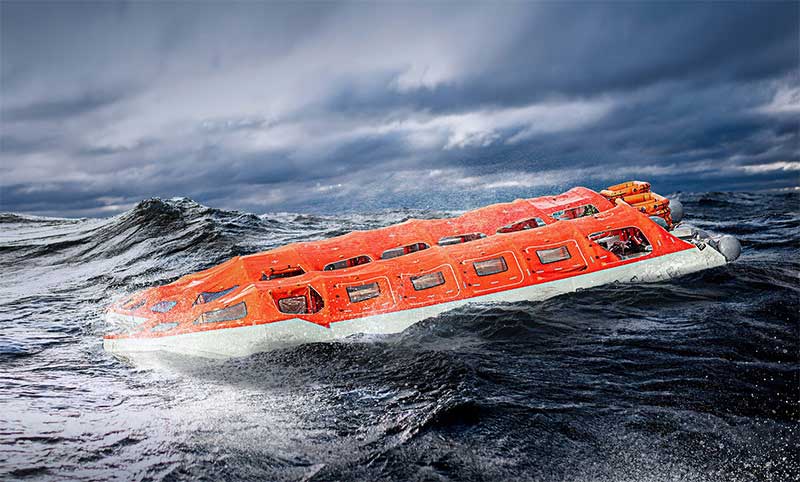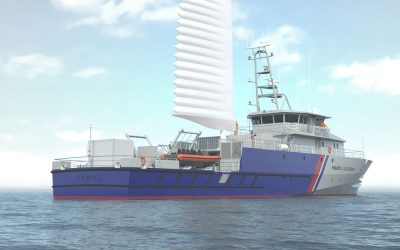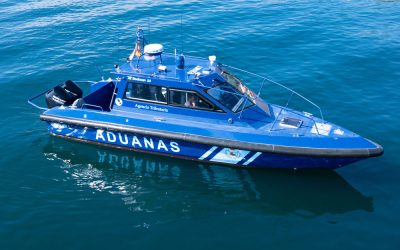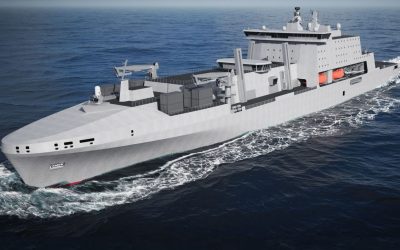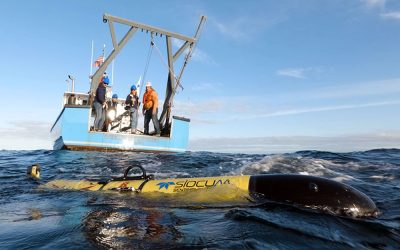Although rarely required, lifeboats are an essential component of a cruise ship. As the last line of defence in extreme emergencies they are subject to stringent regulations regarding the number onboard and their upkeep is of central importance for a ship to meet and pass safety standards. The trend over the last decade or so to treat the cruise liner as a floating resort, rather than means of transport, has led to larger vessels that are required to evacuate increasing numbers of passengers and crew – designs that present a number of challenges, not only for safe and rapid evacuation, but also for space to accommodate the required number of lifeboats.
To meet these challenges, the size and capacity of lifeboats have also evolved over time. According to Life Saving Equipment (LSA) code 4.4.2.1: “No lifeboat shall be approved to accommodate more than 150 persons.” However, a provision on equivalent safety set down in SOLAS and advances in lifeboat manufacture and technology have resulted in high standard ‘mega’ lifeboats to serve the evacuation requirements of modern cruise ships.
The latest of several proposed designs to enter this field is the 2 x 530-person Seahaven advanced evacuation system (AES), “the world’s largest inflatable lifeboat”, developed by safety provider Survitec. The solution, which is self-launching, similar to that of a modern marine evacuation system (MES), provides a totally different outlook on evacuation at sea, according to Richard McCormick, Survitec product manager AES and MES.
“This advance in technology will see the inflatable lifeboat as the main means of evacuation in the coming years, bringing with it a revolution not just in the way in which passengers evacuate in an emergency but also how cruise ships are designed,” he tells The Naval Architect.
Tests and certification
Survitec was presented a Certificate of Type Approval for Seahaven by classification society Lloyd’s Register at last month’s SMM trade fair meaning it is now ready to be installed on cruise vessels. Certification follows the successful completion of heavy weather sea trials (HWST) – carried out in line with the SOLAS requirements for Novel Appliances with tests performed in conditions not dropping below six on the Beaufort Scale – and the International Maritime Organization (IMO) A.520 physical tests as required by Lloyd’s Register.
“The certification is the culmination of six years of R&D work with operators, yards and particularly with the regulatory bodies,” says McCormick.
“The solution is a breakthrough in innovative space-saving design and will present significant opportunities for cruise ship owners whilst prioritising safety at sea,” notes Mark Darley, chief operations officer at Lloyd’s Register.
The two-craft, 1,060-capacity system is stored in a container with a footprint of 16.3m x 3.6m that fits onto a single deck. Once deployed the 27m-long, 9m-wide lifeboats can sail independently at 6knots for 24 hours. A single-release button – either on the bridge or locally at the station where the lifeboats are stored – unrolls, lowers and inflates each lifeboat in under four minutes. The system is served by multiple helical slides, a solution pioneered and evolved by Survitec for more than 20 years.
“The slides allow quick evacuation for both able bodied and mobility impaired persons. It also permits family groups to descend together, including the mobility impaired, reducing stress during the evacuation process,” explains McCormick.
An evacuation time of under 22 minutes was achieved during the A.520 tests. According to SOLAS regulations, the evacuation time should not exceed 30 minutes.
“Seahaven has none of the risks or hazards associated with lifeboat deployment. You’re not putting her over the side, filling her with evacuees, and then lowering her down to the waterline. That risk of human interaction is removed,” says McCormick. “Another benefit in terms of safety is that it’s heavy weather sea trial proven. HWST is something that lifeboats don’t do.”
Seahaven is unusual in that it is the first lifeboat that has passed an exhaustive reliability testing programme that far exceeds the testing requirements set out by SOLAS, adds McCormick. “In SOLAS there’s not even a nod to reliability,” he says. “There are strict rules for what defines a lifeboat, liferaft, MES and lifejacket, and if you pass those tests you get a certificate. Because you’ve passed the test once doesn’t mean your equipment is reliable.”
The last of 10 successive reliability test deployments to prove component reliability was completed in September.
The system has been designed on a 30-month service interval and from an operator’s perspective is relatively maintenance free. “No longer will crew have to carry out launch and evacuation drills or spend time maintaining hooks, blocks, winches and paintwork,” says McCormick. “The unit comes off the ship every 30 months and a fresh unit, just like a cassette, goes into its place. The replaced unit goes to the workshop where it is serviced and repacked to meet the next service cycle.”
Survitec has teamed up with Norwegian Cruise Line Holdings, Independent Maritime Advisors, and a major shipbuilder to deliver a cruise ship design incorporating Seahaven. The companies have established an industry working group with a view to installing the system as the primary means of evacuation onboard Norwegian Cruise Line’s next Prima class of ships.
Survitec has also been engaged with a number of other operators throughout the six-year journey. “As you would expect, they’ve been keeping their powder dry because we’re breaking new ground in terms of innovation. Now we’ve got the certificate the conversation is very different. It’s not just conceptual, we’ve proven it and now it’s time to have a serious conversation around when and how they use it,” McCormick says.
Pushing the boundaries of vessel design
According to McCormick, work undertaken by Survitec shows that replacing conventional lifeboats with Seahaven can free up to an additional 85% of existing lifeboat deck space, yielding up to around US$8 million in increased revenue per year for cruise operators.
He says: “The traditional lifeboat and davit arrangement usually takes up two deck spaces of what is premium real estate on the outside of the ship. Because this solution fits on a single deck we’re freeing up essentially a top row. Some of those obscured cabin views could be turned into balcony cabins and some restaurant spaces could be expanded into an alfresco feature.
“And again, at the lifeboat deck we’re taking up considerably less space. Every ship design will be unique, but that’s space that can be turned over to retail, casino or restaurant space for example.”
As well as operators and shipyards, McCormick says Survitec is looking to engage further with naval architects, people for whom space matters. “That’s been missing to date. As a safety provider, we’ve been mainly focused on the safety and technical side. Now we need the creative side of the business to start thinking about how they’re going to move forward with this technology in terms of vessel design,” he says.
Seahaven is being targeted at newbuilds and older vessels requiring upgrades, with McCormick noting that retrofitting the system to existing ships should be straight forward during a scheduled drydock.
And despite the conservative nature of the industry, he believes that it is ready to consider news ways of approaching safety. “We’re very confident that the first installation will be the wedge in the door. I think ships that we see today, with lifeboats bow to stern, are going to look like a pony and trap in about 10 years’ time. That concept will be gone. Instead, you’ll have Seahaven or a competitor’s equivalent which will be a leap to the art of the possible in terms of what else you can do with that space. It’s going to lift design constraints and really enhance passenger experience and revenue generating opportunities,” he concludes.
